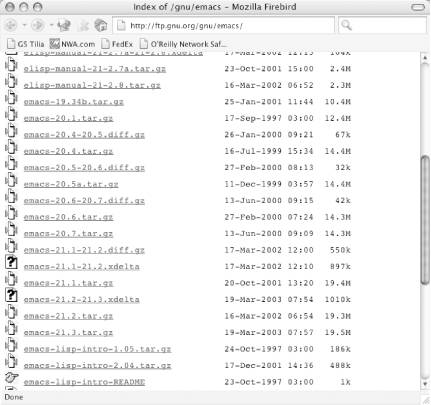
GNU Emacs is the most popular and widespread of the Emacs family of editors. It is also the most powerful and flexible. Unlike all other text editors, GNU Emacs is a complete working environment—you can stay within Emacs all day without leaving.
, 3rd Edition tells readers how to get started with the GNU Emacs editor. It is a thorough guide that will also "grow" with you: as you become more proficient, this book will help you learn how to use Emacs more effectively. It takes you from basic Emacs usage (simple text editing) to moderately complicated customization and programming.The third edition of
describes Emacs 21.3 from the ground up, including new user interface features such as an icon-based toolbar and an interactive interface to Emacs customization. A new chapter details how to install and run Emacs on Mac OS X, Windows, and Linux, including tips for using Emacs effectively on those platforms.
, third edition, covers:
Learning GNU Emacs
Learning GNU Emacs
Learning GNU Emacs
• How to edit files with Emacs
• Using the operating system shell through Emacs
• How to use multiple buffers, windows, and frames
• Customizing Emacs interactively and through startup files
• Writing macros to circumvent repetitious tasks
• Emacs as a programming environment for Java, C++, and Perl, among others
• Using Emacs as an integrated development environment (IDE)
• Integrating Emacs with CVS, Subversion and other change control systems for projects with multiple developers
• Writing HTML, XHTML, and XML with Emacs
• The basics of Emacs Lisp
The book is aimed at new Emacs users, whether or not they are programmers. Also useful for readers switching from other Emacs implementations to GNU Emacs.
13.1.1 Where to Get Emacs?
13.1.1 Where to Get Emacs?
If you can't wait, the primary source for downloading Emacs is http://ftp.gnu.org/pub/gnu/emacs/. Alternatively, you can use CVS to nab the absolute latest build. But more on that in a minute.
13.1.1.1 Downloading Emacs from the Web
You can get Emacs from any one of many sites—as long as your Internet connection is fast enough to transfer a 20 MB file easily. You must also have at least 120 MB of disk space free; this number will certainly grow in future Emacs releases.
The Free Software Foundation maintains a definitive list of all mirror sites. The FSF is the principal sponsor of the GNU Project and it is housed at their site. If you want to look around a bit, http://www.gnu.org/ is the place to start. Or as mentioned earlier, you can just jump directly to the directly listing for Emacs at http://ftp.gnu.org/pub/gnu/emacs/. You should see a list similar to Figure 13-1.
Figure 13-1. The emacs directory at gnu.org
Look for the latest version of Emacs (21.3 in Figure 13-1) and download it.





